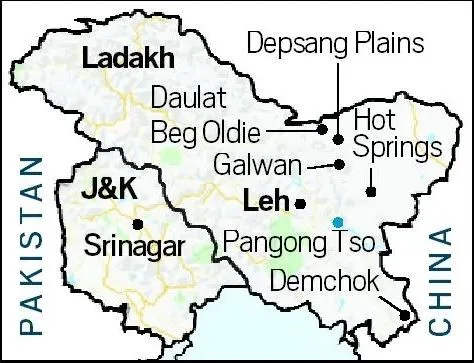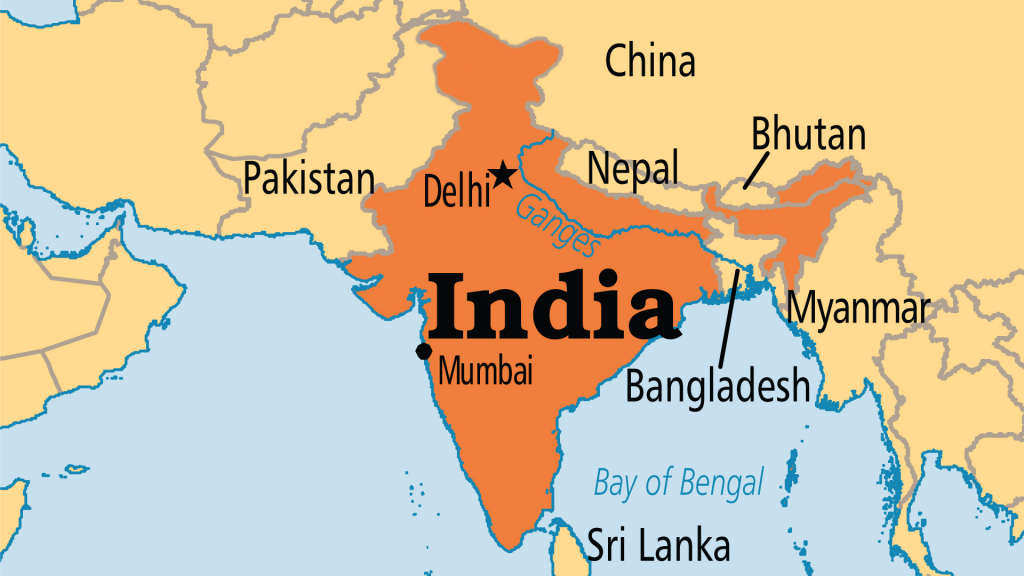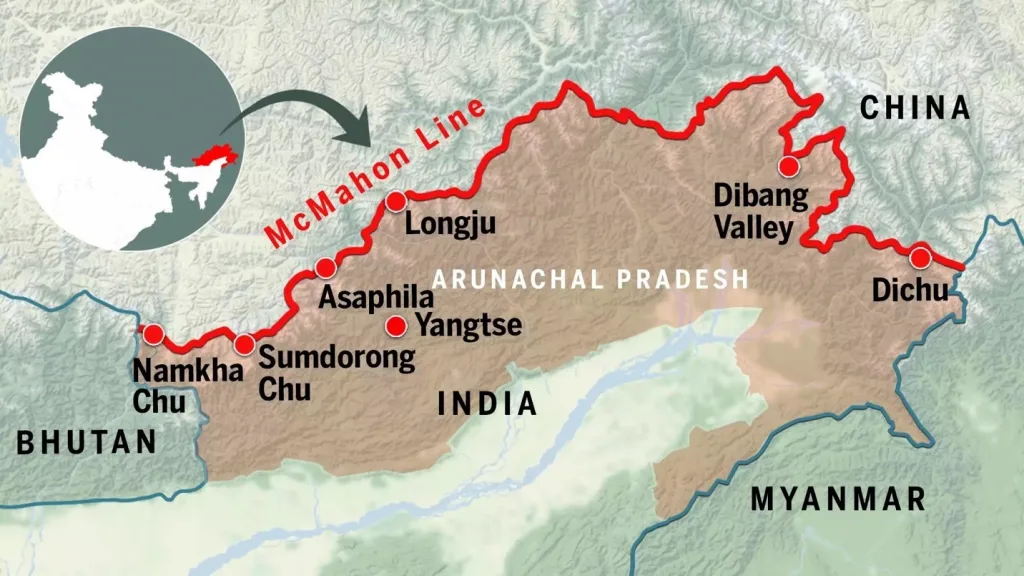Syllabus: GS2/International Relation
Context
- India and China have reached an agreement on the “patrolling arrangements” and the resolution of themilitary stand-off at the Line of Actual Control (LAC).
- It includes the remaining friction points of Demchok and Depsang.
About
- After the beginning of the stand-off in eastern Ladakh in 2020, India and China had deployed thousands of troops in forward posts along the LAC.
- After negotiations were held in a variety of forums, agreement has been arrived at leading to resolution of the issues.
- Certain mutual agreements have also been made for the eastern theatre, especially in the sensitive sectors of Arunachal Pradesh.

The India-China Borders
- India considers the LAC to be 3,488 km long, while the Chinese consider it to be only around 2,000 km.
- It is divided into three sectors: the eastern sector which spans Arunachal Pradesh and Sikkim, the middle sector in Uttarakhand and Himachal Pradesh, and the western sector in Ladakh.
- Western Sector or Aksai Chin Sector: The region is claimed by the Chinese government post-1962 war as an autonomous part of the Xinjiang region which was originally a part of the Indian state of Jammu and Kashmir.
- Middle Sector: It is the less disputed section of the Indo-China border but the recent Doklam standoff and Nathu La Pass trading issues have brought distress at all levels.
- Eastern Sector or Arunachal Pradesh:McMahon Line had differentiated India and China in this sector but in the 1962 war the People’s Liberation Army covered 9000 sq. km. area.
- The announcement of a unilateral ceasefire made them step back on the international borderline.
- However, China has been claiming that area as their own and recently they have started to claim the whole of Arunachal Pradesh as their own.


Why did China Encroach on Indian Territory?
- To show its dominance: China felt that somehow India was not recognising the growing gap in their relative economic status, when China perceived that India was seeking to get closer to the United States (US) to balance China it decided that it needed to demonstrate its power.
- From the Chinese point of view, the basis of this “stability” does not come from settling its border issues with India, but dominance on the border and deterring Indian challenges.
- India’s stand on China’s Aggressive Foreign Policy: India sought to challenge the Chinese point of view in many ways.
- By building up its border infrastructure to more effectively maintain a deterrence capacity against the PLA along its borders.
- By developing a relationship with the US which appeared to merge the threats from China’s primary and secondary strategic directions.
- By promoting its ties with exiled Tibetans and maintaining its relationship with the Dalai Lama.
- Challenging China’s efforts to develop ties in South Asia and the Indian Ocean region.
- Leading the global critique of China’s Belt & Road Initiative.
- Threat to Chinese efforts in the South-Asian region: China needs to be accepted in its periphery as the foremost economic and military power, before it is taken seriously as a global power.
- In its southwest is India, equally huge and populous and with aspirations of its own, and its neighbors most certainly see India as being the naturally pre-eminent power in South Asia.
- India’s engagement with Chinese Adversaries: In recent years, India has developed strong military ties with the country which China believes is its primary threat, the United States.
- China would like to focus on the western Pacific challenge and retain stable ties with India in South Asia.
- India’s constant efforts, however, to upgrade its border infrastructure and strengthen its partnership with the US destabilise China’s calculations.
Way Forward
- Disengaging from the points of friction is undoubtedly a step forward, and India and China must go a long way to solve the border dispute.
- India should continue to press for complete disengagement and de-escalation from all friction areas.
- Also, the Corps Commanders level talks must continue as the relationship cannot go back to normal as long as the situation along the stand-off lingers.
- India must keep its stand firm over restoring the status quo and rebuilding peace all along the LAC.
- The Indian government must constantly watch all developments that affect India’s security and take all essential measures to safeguard its sovereignty and territorial integrity.
Source: TH
Previous article
Bail Provisions Under BNSS for Undertrial Prisoners
Next article
COP 16 of Convention on Biological Diversity